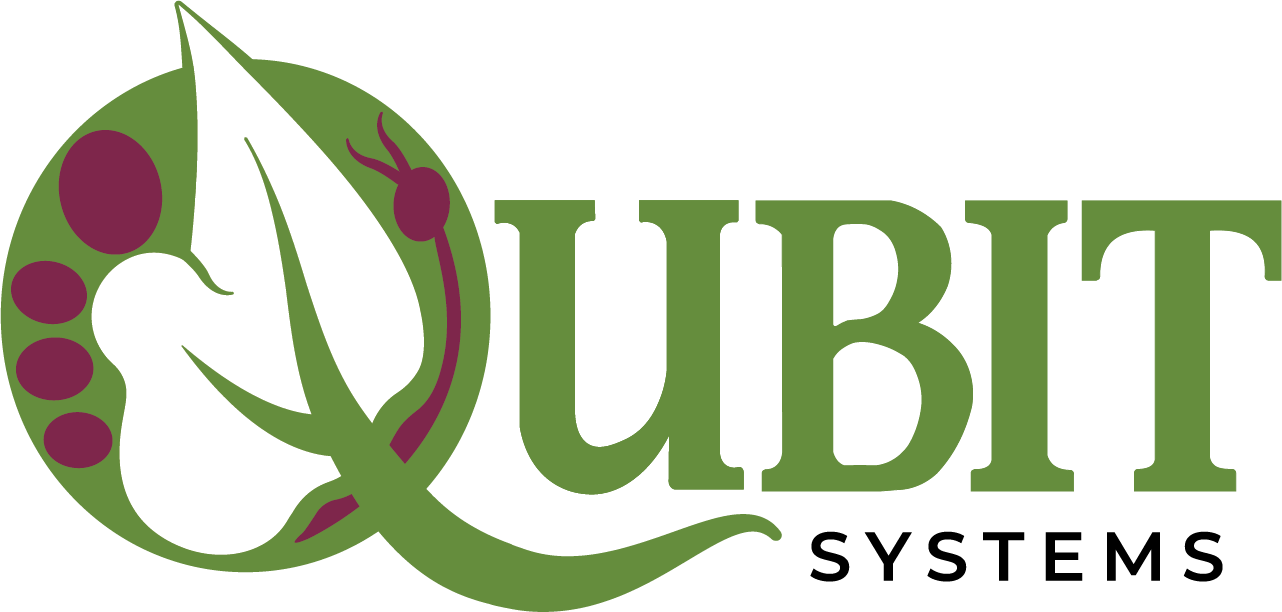Japanese Researchers get to the Bottom of a Respiratory Peculiarity
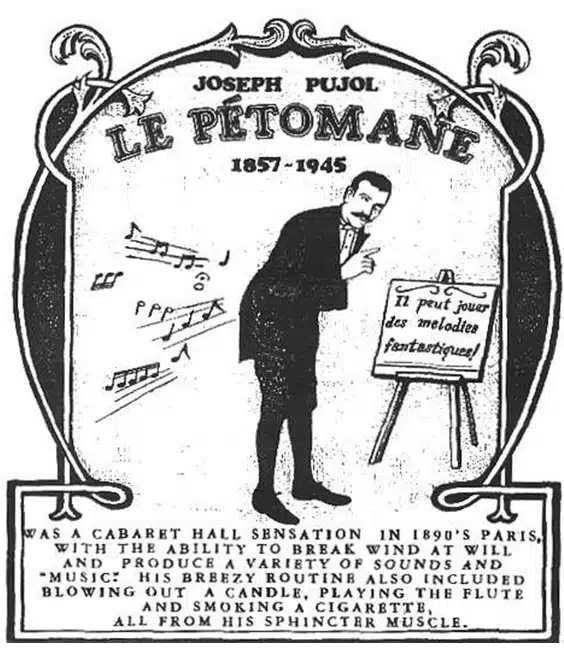
The Ig Nobel Prize for Physiology was awarded recently to a group of Japanese researchers who, we presume, used novel analysis methods to show that pigs can breathe through their butt-holes (MORE). Humans can do the same trick, which may have profound implications on the survival of patients suffering from conditions (such as COVID-19) that severely compromise thoracic respiration. Anal breathing has also been touted as a treatment for erectile dysfunction (MORE); however, since mastery requires disciplined exercise, the technique is unlikely to offer stiff competition to Viagra. Bi-directional rectal ventilation is nothing new. Joseph Pujol, a celebrated French entertainer of the late 19th century, enthralled audiences at the Moulin Rouge with his ability to fart entire wind concertos (mercifully without movements), and could use his extraordinary ability to extinguish a candle at several paces (WARNING: for those on a high-fiber diet do NOT attempt this at home).
We congratulate Dr. Takanori Takabe and fellow researchers on getting to the bottom of this important subject, and in coming up trumps in the Ig Nobel Awards. We’ll keep our readers informed as soon as we get wind of other exciting scientific developments. In the meantime, read on to learn about Qubit’s various Gas Measurement and Control Systems for monitoring the ins and outs of animal and plant physiology and metabolism – we make your research a breeze.
Dr. Steve Hunt. President and CEO, Qubit Systems Inc.
Which Gas Analysis System Do I Need?

Qubit clients range from those who know precisely the gas exchange technology they require, to those who are entirely new to the fields of respirometry, photosynthesis and environmental monitoring. Therefore, we provide advice to those who request it, and support to those who do not. We offer fully integrated analyzers, such as our S159 instruments, for monitoring O2, CO2, CH4, and Flow Rate, as well as our modular Q-Box Systems, comprised of the client’s choice of individual gas analyzers (CO2, O2, CH4, H2, RH) together with pumps and mass flow monitors. The S159 instruments are excellent for field work, being compact, lightweight and temperature-controlled. The Q-Box line is also field-portable, but Q-Boxes are heavier, and not temperature-controlled. However, the Q-Box modular design allows components to be swapped in and out, so a single Q-Box can be configured for various applications (such as large and small animal respirometry, or photosynthesis, soil and insect respirometry). Whatever your level of expertise, the scientists at Qubit Systems are always available for consultation on experimental design, and to advise on the optimum configuration of instruments for your specific applications.
Multichannel Systems
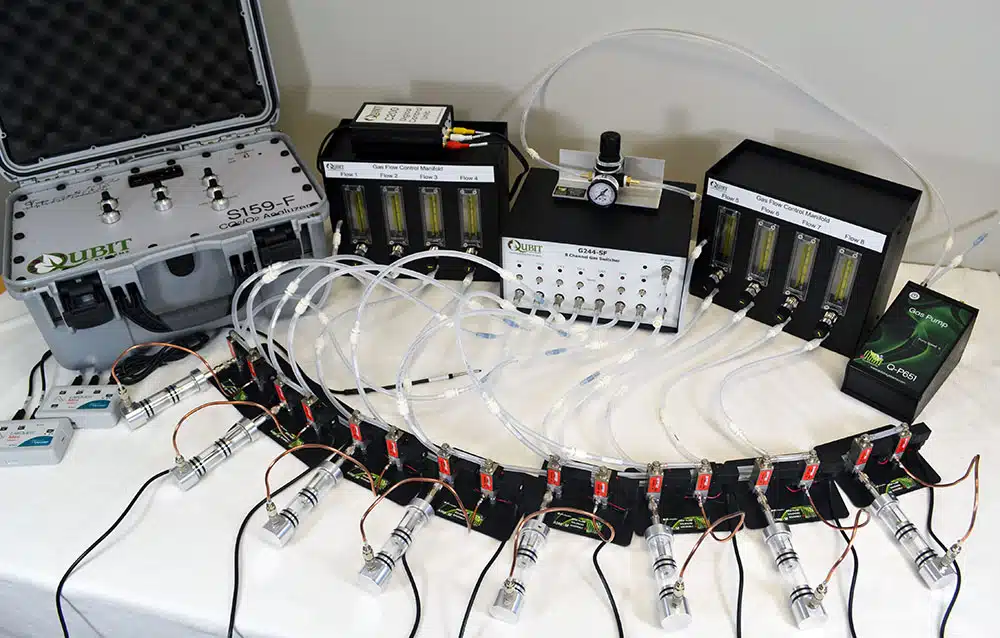
For circumstances in which several samples need to be compared in fairly rapid sequence to overcome the effects of circadian rhythms, or changing environmental variables, Qubit offers Multichannel Gas Exchange Systems with the capacity to analyze several samples consecutively using a single set of analyzers. Our standard multichannel systems have either 4 or 8 channels (each with one reference channel), whereas our customized systems can be used to monitor 40 or more channels in sequence. In a recent installation at the USDA-ARS Edward T. Schafer Agricultural Research Center in Fargo ND, we provided a 40-channel system to monitor respiratory carbon losses from sugar beets – a problem that costs the US sugar industry vast sums annually. Current projects include an 8-channel system for Hills Pet Foods to monitor dog respirometry, a similar system for the Kansas State University, and a 12-channel system at the University of Guelph to monitor O2, CO2, CH4, NH3 and N2O exchange from pigs, goats and poultry in large-scale sample chambers.
How Low Can You Go?
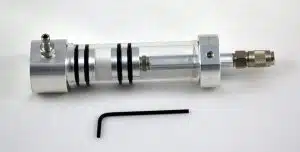
This isn’t about the current political limbo dance, and the bar that certain individuals seem able to slither beneath, but how to choose the most appropriate gas exchange system to measure a specific physiological process. In its very simplest form, the equation for O2 exchange rate (for example) in an open-flow gas exchange system is VO2 = F(Oi – Oe ), where Oi and Oe are the concentrations of O2 in the gas entering and exiting the sample chamber, respectively, and F is the flow rate of gas through the chamber. It is important that gas analyzers are chosen with appropriate ranges to measure gas differentials accurately. If the resolution of the analyzer is too coarse for accurate differential measurements, even at low flow rates, gas exchange systems can be configured in stop-flow mode in which the chamber is sealed to allow gases to deplete or accumulate to measurable levels. The chamber is then flushed for gas analysis, and time-integrated rates of exchange are calculated. Qubit gas exchange systems can be configured for both open-flow and stop-flow measurements, and we offer a large range of chambers pumps and flow meters suitable for use with the tiniest insects to the largest mammals.
Differential Oxygen Analysis for Respirometry and Photosynthesis
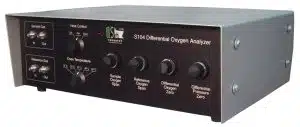
Prior to Qubit Systems inventing the world’s most sensitive differential O2 analyzer (the S104 DOX), obtaining accurate measurements of O2 and CO2 differentials simultaneously in an open-flow gas exchange system was not possible. While low ppm CO2 differentials could be measured during photosynthesis and insect respirometry, the resolution of existing O2 analyzers was insufficient to measure low ppm O2 differentials against ambient air. Our patented DOX technology changed all that, so that Respiratory and Photosynthetic Exchange Ratios (VCO2/VO2) could be monitored continuously. Among other things, this led to insights into the operation of alternative pathways for reductant flux in photosynthesis and respiration. Currently, the DOX is being used to measure energy expenditure from human subjects housed in large-scale metabolic chambers, since the high flow rate required through these chambers can result in low O2 differentials. And, getting back to blowing wind, if you read delusional claims that a company other than Qubit Systems was the first to design and build a high-resolution differential oxygen analyser, a simple fact check of patent and publication dates will put the matter straight.
What About Teaching?
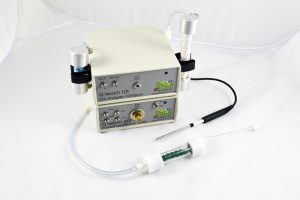
Qubit’s Q-teach Packages are complete gas exchange systems for teaching the principles of respirometry and photosynthesis in laboratory classes. Starting at only $4200 USD, Q-teach packages include all the hardware and software required for students to conduct a broad range of experiments investigating numerous aspects of the physiology and metabolism of plants, algae, insects, fish, mammals and humans. While we would hesitate to state that even the Great Pyramids of Giza are student-proof (as the noseless Sphinx might warn), our Q-teach products are standing the test of time.
Thanks, Erratum, and an Apology

Thanks to the numerous readers of Qubit’s May 2024 Newsletter who wrote to say how much they enjoyed it. It’s gratifying that the effort to entertain, as well as to inform, is appreciated. However, I must admit to stating erroneously that the parents of Andy Warhol were of Czech origin, whereas they were, in fact, Slovakian. I apologize to any Slovak who may have taken umbrage at this, and particularly to Dr. Milan Hanacek who berated me for diminishing the artistic heritage of the great Slovak nation. I travelled recently through the Tatra region of Slovakia, and can attest that the scenery is stunning, the people charming, and the beer as good as you’ll find anywhere in Europe.
Upcoming Conferences
Entomology 2024 Phoenix, AZ Nov 10-13
ASA, CSSA, SSSA Agronomy and Soil Sciences San Antonio,TX, Nov 10- 13
American Geophysical Union. Washington DC, Dec 9-13
Society for Integrative and Comparative Biology Atlanta, GA January 3 – 7, 2025

